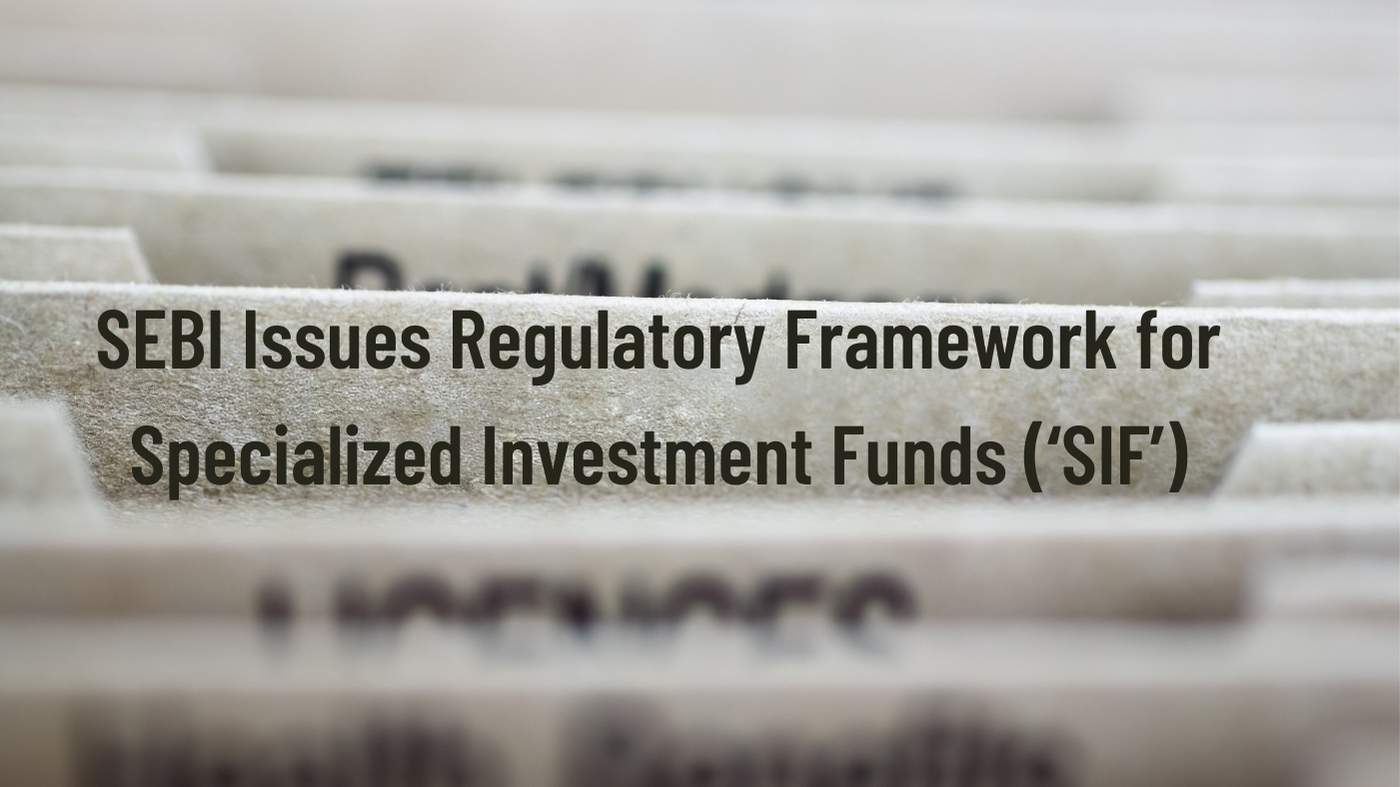The investment landscape in India has evolved significantly, catering to diverse investor profiles, from retail participants to high-net-worth individuals and institutions. Recognising the gap between Mutual Funds (MFs) and Portfolio Management Services (PMS), SEBI has introduced a new category—specialized Investment Funds (SIF)—to provide greater flexibility while maintaining robust regulatory oversight.
📌 What is a Specialized Investment Fund (SIF)?
A Specialized Investment Fund (SIF) is a newly regulated investment vehicle positioned between mutual funds and portfolio management services. The SIF structure increases portfolio flexibility while ensuring adequate investor protection through SEBI’s regulatory framework.
📌 Key Highlights of SEBI’s Regulatory Framework for SIF
1. Eligibility Criteria for Establishing an SIF
Mutual funds registered under SEBI regulations can apply to establish an SIF under two routes:
➡️ Route 1—Sound Track Record: The mutual fund must have been operating for at least three years and have an average Asset Under Management (AUM) of INR 10,000 crores.
➡️ Route 2 – Alternate Route: The fund must appoint a Chief Investment Officer (CIO) with 10+ years of experience managing AUM of at least INR 5,000 crores and an additional Fund Manager with at least three years of experience managing INR 500 crores.
2. Branding and Advertisement Regulations
➡️ SIFs must have a distinct brand name and logo, separate from their parent mutual fund.
➡️ The AMC may use its parent brand name in SIF-related promotions for up to five years.
➡️ A separate website or webpage must be maintained for SIF investments.
3. Investment Strategies Allowed
SEBI has defined several investment strategies under SIF and categorised them into equity-oriented, debt-oriented, and hybrid.
A) Equity Strategies
➡️ Equity Long-Short Fund: Invests at least 80% in equities with a maximum short exposure of 25%.
➡️ Equity Ex-Top 100 Long-Short Fund: Focuses on stocks outside the top 100 market cap.
➡️ Sector Rotation Long-Short Fund: Allocates at least 80% to a maximum of four sectors.
B) Debt Strategies
➡️ Debt Long-Short Fund: Investments across duration-based debt instruments.
➡️ Sectoral Debt Long-Short Fund: Focuses on at least two sectors, with exposure limits per sector.
C) Hybrid Strategies
➡️ Active Asset Allocator Long-Short Fund: Dynamically invests across multiple asset classes, including REITs and commodity derivatives.
➡️ Hybrid Long-Short Fund: A balanced allocation between equity and debt.
4. Minimum Investment Requirement
➡️ The minimum investment threshold for investors in an SIF is INR 10 lakh across all investment strategies.
➡️ This threshold does not apply to accredited investors.
➡️ Under SIF, Systematic Investment Plans (SIPs), Systematic Withdrawal Plans (SWPs), and Systematic Transfer Plans (STPs) are allowed.
5. Restrictions on Investments
➡️ Exposure limits for debt and money market securities based on their credit rating (AAA: 20%, AA: 16%, A & below: 12%).
➡️ Derivative exposure is limited to 25% of net assets, except for hedging and rebalancing.
➡️ Short exposure within a sector must apply across all securities in that sector.
6. Subscription, Redemption, and Listing
➡️ SIFs can offer open-ended, close-ended, or interval-based investment strategies.
➡️ Redemption and subscription frequencies can vary based on the nature of investments.
➡️ Units of close-ended and interval funds must be listed on recognised stock exchanges.
7. Benchmarking and Disclosure Requirements
➡️ Investment strategies must follow a single-tier benchmark structure.
➡️ Portfolio disclosures will be made every alternate month.
➡️ Advertisements must carry a standard disclaimer about the higher risk associated with SIFs.
📌 Final Words
Introducing Specialized Investment Funds (SIFs) is a significant step towards bridging the gap between mutual funds and portfolio management services. By providing investors with more flexible investment options while maintaining strong regulatory oversight, SEBI aims to enhance the investment ecosystem in India. As AMCs and distributors adapt to these new regulations, SIFs could become a game-changer in the Indian investment space.

